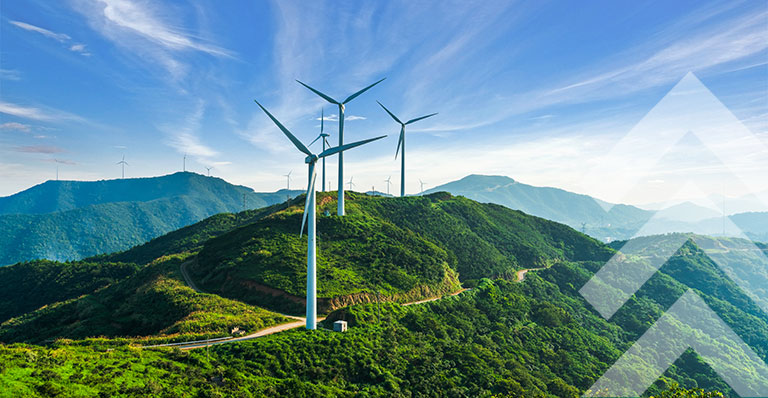While the global cleantech market is projected to exceed US$2.5 trillion by 2022, Canada’s slice of that is about 2% of the total. Part of the challenge is that most of our economic output is generated by the extraction of resources, construction and services. Yet, the bulk of cleantech exports are in manufactured goods, specifically complex manufactures.
While services predominate in the domestic market, Canada shows limited cleantech services exports. This contributes to a cleantech trade deficit for Canada. Overall, the broad environmental and cleantech sector (ECT) also registers a trade deficit, due to imports of biofuels and primary goods that far exceed the export of clean electricity.
Can Canada supercharge its cleantech exports? And what does the current global environment mean for our cleantech aspirations?
Canada set a target of $20 billion in cleantech exports by 2025, which would mean more than doubling 2020 foreign sales in only five years’ time. To achieve this, we’d need to see average annual growth rates of close to 17%, requiring Canadian manufacturers and service providers to significantly increase market share abroad. But while Canadian exporters have seen some success in increasing exports to non-U.S. markets in recent years, most of our ECT trade remains highly dependent on the United States.
Another issue for our cleantech sector is that it’s predominantly composed of small- and medium-sized enterprises. Many of these firms struggle to achieve market acceptance, attract funds for growth and become cash flow positive as they pursue innovative research and development. Challenges in commercializing intellectual capital have constrained companies’ ability to scale up production fast enough to reduce per-unit costs, despite an increase in private equity and venture capital funding in 2020-2021.
You should also check out
Read this important EDC report to find out how AI is shaping the future of clean technology
Going forward, difficulties accessing much-needed funding for scale will be compounded by current market developments and the emerging macroeconomic context. A higher interest rate environment has already led to a reallocation of capital into value stocks and safer securities.
The outflow of private equity and venture capital from some innovative sectors of the economy could make access to financing even more difficult and costly for early-stage cleantech startups in 2022 and beyond. At the same time, as public sector finances are being stretched by multiple, competing demands, government support for cleantech innovation could wane, at a time when supply chain disruptions continue to exert liquidity pressures.
The need for energy independence has been identified as a priority in many parts of the world. Access to clean and affordable electricity and power will be an increasingly important strategic consideration at both commercial and residential levels.
This is an area where Canada’s cleantech and broader ECT sector could find considerable trade and investment opportunities. This includes opportunities in traditional sectors as well, like mining, to enable the shift towards increased industrial electrification.
The impacts of climate change could also lead to opportunities for Canadian cleantech firms, including in places, like Africa, where food security and climate change issues are having a devastating impact on underlying security. Climate change is impacting the ability to transport and ship food commodities in Latin America, such as in the Amazon, due to low sea levels, similar to the Rhine in Europe where barge traffic is under threat due to low water levels.
Additionally, recent geopolitical stresses could encourage an increase in joint ventures and R&D collaboration among “friendly nations” and firms. In this regard, North American companies may increase collaboration with European and Asia-Pacific firms on proprietary technologies and processes in the coming years as supply chains and energy market relationships realign.
The bottom line?
With 13 of the Top 100 innovative cleantech firms based in Canada, our companies are well-placed to capitalize on new opportunities, given global demand for innovative solutions. Canada’s innovation and ecosystem support for startups ranks fourth only to the U.S., United Kingdom and Israel, and our proximity to and active integration with the U.S. helps position Canada for future success. Hitting our 2025 targets, however, will require Canadian companies to navigate the considerable economic, financial and business environment challenges in the years ahead.
This week, a special thanks to Michael Borish, senior analyst with our Research and Analysis Department.
As always, at EDC Economics, we value your feedback. If you have ideas for topics that you would like us to explore, please email us at economics@edc.ca and we’ll do our best to cover them.
This commentary is presented for informational purposes only. It’s not intended to be a comprehensive or detailed statement on any subject and no representations or warranties, express or implied, are made as to its accuracy, timeliness or completeness. Nothing in this commentary is intended to provide financial, legal, accounting or tax advice nor should it be relied upon. EDC nor the author is liable whatsoever for any loss or damage caused by, or resulting from, any use of or any inaccuracies, errors or omissions in the information provided.






